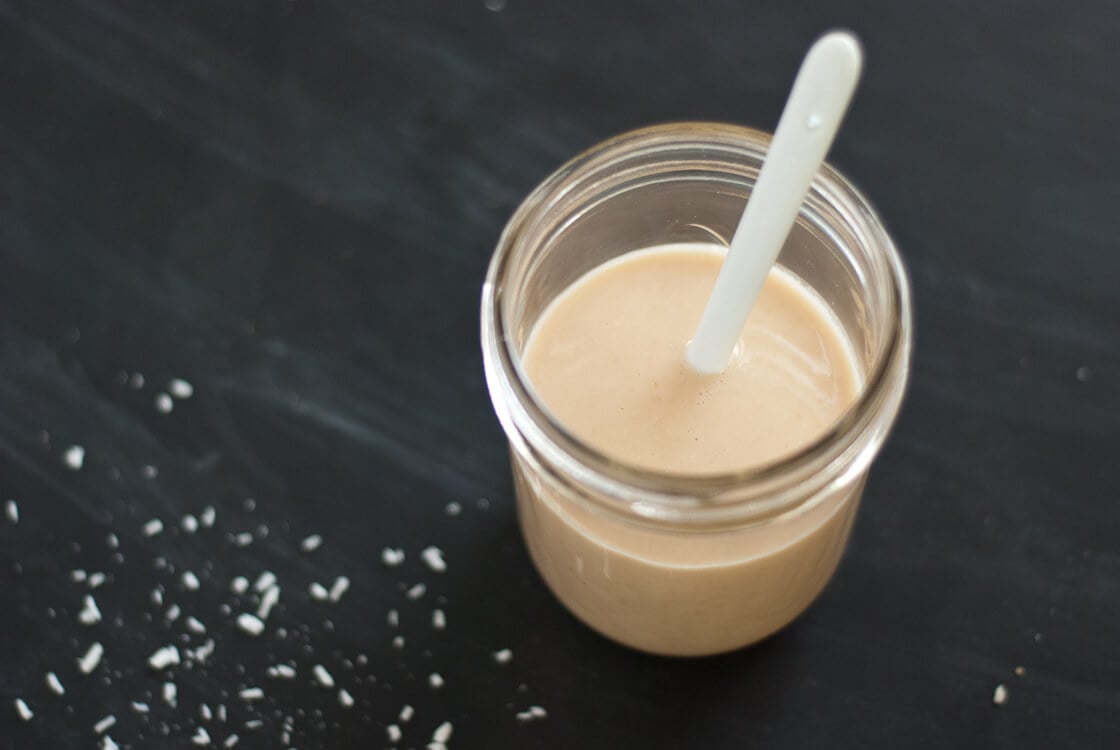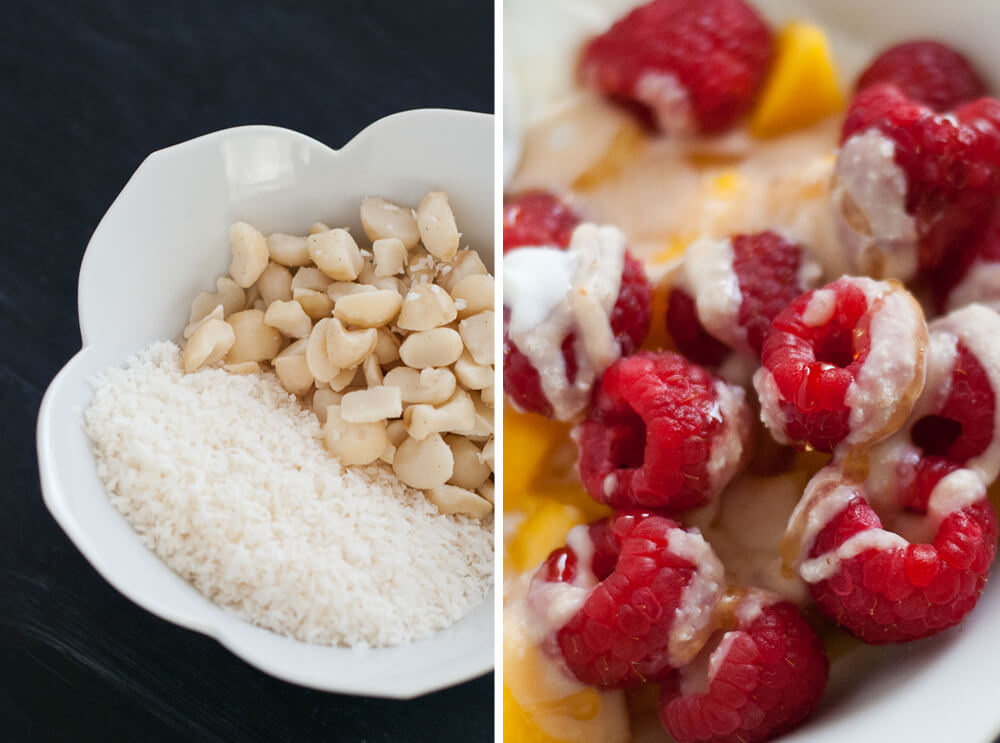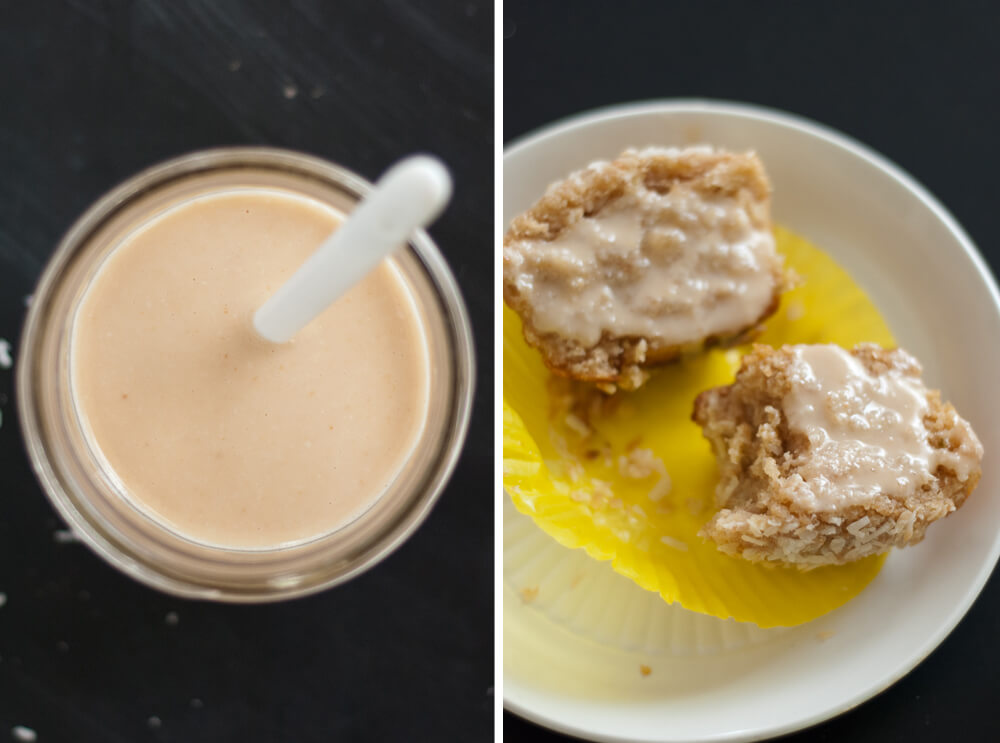It’s about time we talked about coconut butter. I’m sorry for keeping this nutty, spreadable goodness to myself for so long. I first learned about coconut butter when I made it for my raw, vegan fudge and I’ve kept a jar of it stashed in my cupboard ever since, replenishing my supply every time I run low. In its most basic form, coconut butter is just unsweetened coconut flakes that have been whirred together in a food processor. Toast the coconut flakes, add some macadamia nuts and a dash of sea salt, and coconut butter becomes truly magical.
Coconut butter is good on pretty much everything, but it does something amazing on cold stuff like ice cream and yogurt: it hardens into a magic shell-like topping! Coconut oil is, by the way, the magical ingredient in shell toppings. Like coconut butter, it solidifies at temperatures below 76 degrees Fahrenheit. Coconut butter really adds an extra dimension of texture and flavor to chilled berries and vanilla bean Greek yogurt, as shown above. Drizzled over chocolate ice cream? Out of this world, I’m sure.
Want more uses for coconut butter? Spread it on banana bread or pumpkin bread. Use it as natural icing for chocolate cake. Try pouring it over carrot cake pancakes or banana oat pancakes or whole wheat waffles. If you’re a coconut lover like myself, double the coconut by drizzling it onto coconut pancakes, coconut waffles or banana coconut muffins.
I’ve made coconut butter about five times by now and have a few notes to share. First of all, don’t try to make tiny batches; the coconut flakes will fly to the sides of the food processor instead of sticking together. You need at least two cups’ worth of flakes in order for the coconut butter to come together. Coconut flakes reduce by one half in the process; in other words, two cups coconut flakes will yield about one cup coconut butter. Volume is an accurate indicator, however. Eight ounces coconut flakes will produce 8 ounces coconut butter (one cup). Homemade coconut butter will never be as perfectly smooth as store-bought, but I honestly like the faintly gritty texture. Toast some of the coconut beforehand for fantastic nutty, toasty flavor. Add macadamia nuts and the mixture will come together more quickly, with less need to stop and scrape down the sides. I suspect this is because the extra fat in the nuts helps the coconut blend. I bet you could sub any other kind of nut for the macadamia nuts, depending on the desired flavor. A dash of sea salt does a world of good.





